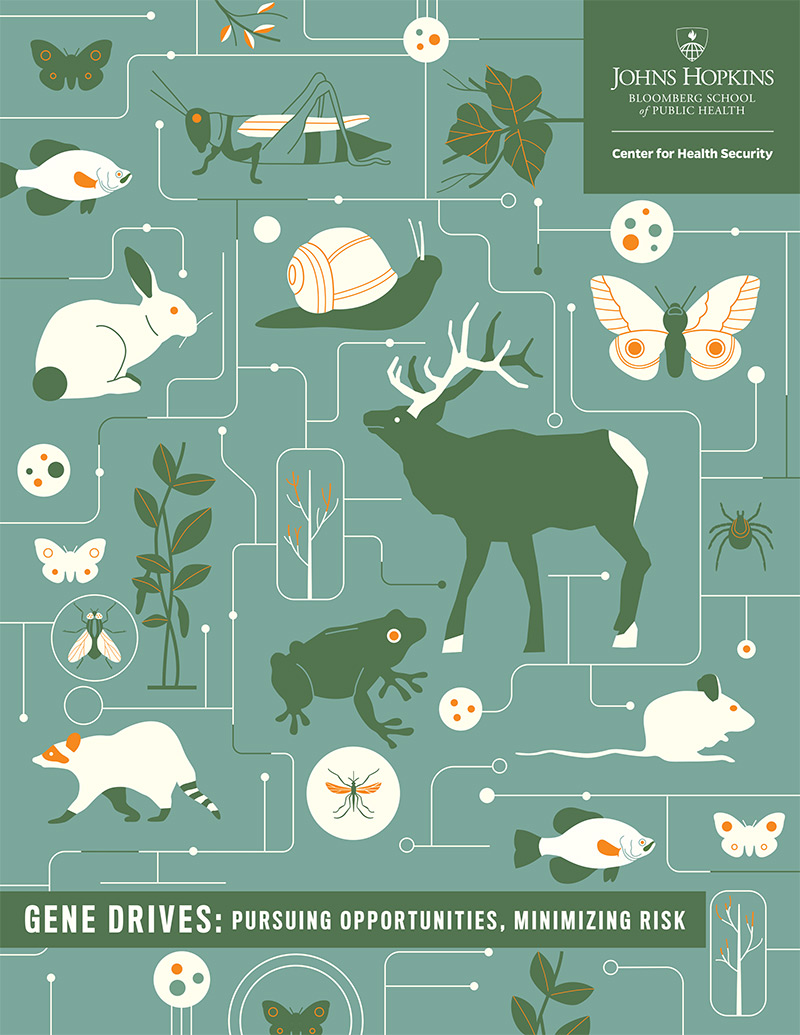New Report from Johns Hopkins Center for Health Security: Gene Drives: Pursuing Opportunities, Minimizing Risk
Center News

May 20, 2020 – The Center for Health Security at Johns Hopkins Bloomberg School of Public Health has released a new report that makes recommendations for the responsible governance of gene drives. The Center advocates that these recommendations be addressed before gene drives become a used and normalized tool.
Gene drives are a type of genetic element capable of biasing inheritance patterns of a targeted host species, which results in the gene drive’s improving the chances of its own inheritance in subsequent generations. While gene drives occur naturally, they have more recently been cultivated as a powerful biotechnology that can be used to facilitate the manipulation of the genetics of entire populations.
The report, “Gene Drives: Pursuing Opportunities, Minimizing Risk,” analyzes the current state of gene drive technologies, the ways in which they might be deployed in the field and the associated risks, and the state of regulatory policy governing their development. The report calls for legislation that should include an international tiered registry of gene drive research, testing, and deployment as well as monitoring, risk assessment, and the requirement for a reversal drive to be developed and ready to deploy if needed at the same time the original drive is deployed. The authors identify 7 policy recommendations:
- Create a national tiered registry system for gene drive research and development, with increasing requirements for information disclosure as deployment becomes imminent.
- Evaluate each proposed gene drive system on a case-by-case basis. Regulatory bodies should oversee gene drives. Organizations including the FDA, USDA, and EPA should create regulations and risk assessment plans for each gene drive entering the deployment stage.
- Avoid full moratoriums on gene drive research, but mandate appropriate biosafety, risk assessment processes, and regulatory controls.
- Create special international agreements to address the use of gene drives in species of agricultural importance or in human-influenced species such as deer or ocean-caught fish.
- Prevent the release of any gene drive without a tested reversal drive.
- Mandate the incorporation of multiple containment strategies during the research and development stage to mitigate the risk of spread in the event of an accidental release or laboratory escape.
- Require coordination and communication between researchers and local and international stakeholders as a prerequisite to gene drive deployment.
According to the report authors, absent national policies and regulations, gene drives pose a unique set of risks compared to other GMOs. While several studies have assessed the risks posed by gene drives in mosquitoes or other insects, few have considered gene drives used in other types of organisms.
The new report with executive summary can be accessed here.
